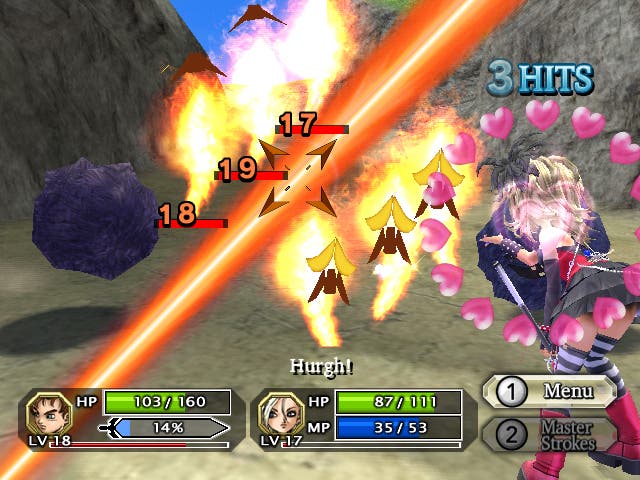Dragon Quest Swords: The Masked Queen and the Tower of Mirrors
And breathe.
If videogame worlds were tourist destinations then Dragon Quest's would surely be among the most visited. The central castle's white marble pillars are plucked from the most imaginative six-year-old girl's princess fantasy. As you stand in front of its gates, looking out upon endless pea-green hills rolling under tireless SEGA-blue skies, the vista is nothing short of idyllic. Even when you venture down through the town and descend into the murk of a nearby dungeon, the air is warm, the monsters chirpy and charming and the ambiance devoid of Dungeons & Dragons' musty fear and danger. This world is Oblivion repainted with Super Mario 64 textures: knights, castles, valour, steel, and loads and loads of ChupaChups.
This warm feeling is helped no end by the world's residents, all of whom speak their funny lines with pantomime grandeur and overblown British accents straight out of Monty Python and the Holy Grail. The first boss you encounter, the Brian Blessed-esque Sir Dirk Worthington, seems to have been named precisely so an NPC can chirrup, "You defeated Sir Worthington, warrior of worth, in the worth of worth at the end of the walk of the worthy." It's all very silly and, if you allow yourself to get into the spirit of things, this kooky character elevates an otherwise mediocre game to one that's cute and interesting.
As you will gather from the mouthful of a title, DQ Swords Wii is a spin-off to the mainline Dragon Quest lineage, a series of games that have for decades now stood as Japan's most popular. The result is a peculiar RPG that has its roots in a much older DQ spin-off, the Japanese-only Kenshin Dragon Quest. A TV plug-in game, it was sold with a plastic sword and ran on its own hardware without the need of a console (a bit like those dodgy Atari knock-offs where the ROM-containing controller plugs directly into the TV).

With the advent of the Wii, the idea has been spun out into a fully-fledged adventure played entirely on the Wiimote. Control of your character (who is soon joined on his quest to rescue the queen by three others) is handled with the d-pad. Western players versed in FPS controls will find the control mechanism stifling, though, as you can only move forwards and backwards and have to stop to turn. You can't look up or down either, and there's no strafing - never particularly realistic, but something we've come to expect. Once out of town and on the game's pathways, the game switches to a kind of on-rails experience, movement restricted as the acres of lush greenery about you remain tantalising but out of bounds. After the freedom and wonder of the PlayStation 2's exquisite Dragon Quest 8, these limitations frustrate.
Battles are random but seamlessly play out in situ, with no special battle environment. The cutesy enemy creatures hobble onto screen from behind rocks and bushes nearby and, using the Wiimote, you swipe and carve them into cutesy enemy chunks. Akira Toriyama's designs exude charm and, no matter how feisty an enemy is in its attacks, in fighting back you always feel a bit like you're pulling the heads off small mammals in a petting zoo while watching children cling to their mothers in horror.








